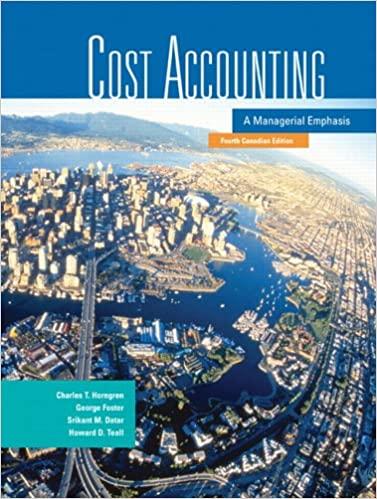Selling plant, income taxes. (CMA, adapted) Waterford Specialties Corporation, a clothing manufacturer, has a plant that will
Question:
Selling plant, income taxes. (CMA, adapted) Waterford Specialties Corporation, a clothing manufacturer, has a plant that will become idle on December 31, 2006. John Landry, corpo¬
rate controller, has been asked to look at three options regarding the disposal of the plant.
Option 1. The plant, which has been fully amortized for financial reporting, can be sold immediately for $10.8 million.
Option 2. The plant can be leased to Auburn Mills, one ofWaterford’s suppliers, for four years. Under the terms of the lease, Auburn would pay Waterford $240,000 per month in rent and would grant Waterford a special 10% discount off the normal price of $2.40 per metre on 2.37 million metres of fabric purchased by another Waterford plant. Auburn would cover all the plant’s ownership costs including property taxes. Waterford expects to sell this plant for $2.4 million at the end of the four-year lease.
Option 3. The plant could be used for four years to make souvenir jackets for the 2010 Olympics. Fixed overhead, before any equipment upgrades, is estimated to be $240,000 annually for the four-year period. The jackets are expected to sell for $50.40 each. Unit variable costs are expected to be as follows: direct materials, $24.96; direct manufacturing, marketing, and distribution labour, $7.68; variable manufacturing, marketing, and distri¬
bution overhead, $6.96.
The following production and sales ofjackets are expected: 2007, 200,000 units; 2008, 300,000 units; 2009, 400,000 units; 2010, 100,000 units. To manufacture the souvenir jackets, some of the plant equipment would have to be upgraded at an immediate cost of $1.8 million to be amortized for financial reporting purposes using straight-line amortization over the four years it will be in use. Because of the modernization of the equipment, Waterford could sell the plant for $3.6 million at the end of four years. The equipment qualifies for a 25%
declining balance capital cost allowance rate.
Waterford treats all cash flows as if they occur at the end of the year and uses an after¬
tax cost of capital of 12%. Waterford is subject to a 40% tax rate.
872 CHAPTER 22 Required 1. Would you use the total project approach or the differential approach to choose among the three options? Why?
2. Calculate the net present value of each ofthe options available to Waterford and determine which option Waterford should select using the net present value criterion.
3. What nonfinancial and qualitative factors should Waterford consider before making its choice?
Step by Step Answer:

Cost Accounting A Managerial Emphasis
ISBN: 9780131971905
4th Canadian Edition
Authors: Charles T. Horngren, George Foster, Srikant M. Datar, Howard D. Teall





